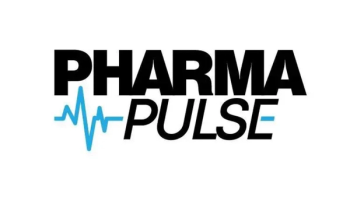
How Regulatory Mandates Influence Technology
In the third part of her Pharma Commerce video interview, Kirsten Newquist, Identiv’s CEO, shares the ways in which regulations, including DSCSA, are impacting the adoption of smarter packaging technologies across the industry.
In a video interview with Pharma Commerce, Kirsten Newquist, Identiv’s CEO, defines “smart pharma packaging” as the integration of technology into pharmaceutical packaging to enhance product identification, tracking, and patient engagement. She explains that packaging primarily involves embedding technologies such as RFID radio-frequency identification (RFID) or Bluetooth low energy (BLE) into pharmaceutical containers. These technologies assign a unique digital ID to each package, enabling serialization, which is critical for tracking and traceability across the global supply chain.
This digital ID allows stakeholders—from manufacturers to pharmacists and patients—to verify a drug’s authenticity at every step of its journey. This significantly reduces the risk of counterfeit drugs entering the system, as products can be authenticated upon delivery or administration. Newquist emphasizes that this kind of smart packaging not only strengthens supply chain security but also fosters better patient engagement, offering real-time data that can support dosage verification and proper usage.
Additionally, she notes a secondary dimension of smart packaging: smart drug delivery systems. These include technologically enhanced devices like auto-injectors, smart pillboxes, or connected syringes, which offer further layers of verification and ensure patients receive the correct medication and dosage. While this may go beyond traditional packaging, it aligns with the broader goals of improving safety, compliance, and confidence in the pharmaceutical supply chain.
Overall, smart pharma packaging plays a crucial role in combating drug counterfeiting by improving transparency and traceability from production to patient use. By embedding intelligence into packaging and delivery systems, the pharmaceutical industry is better equipped to protect product integrity and ensure patient safety in an increasingly complex global supply chain.
Newquist also comments on the role embedded product intelligence plays in maintaining cold chain integrity, and why is this so critical for pharmaceutical safety and efficacy; how regulatory mandates, such as the Drug Supply Chain Security Act (DSCSA), influence the adoption of smarter packaging technologies across the industry; some of the biggest challenges pharmaceutical companies face in implementing this infrastructure, and much more.
A transcript of her conversation with PC can be found below.
PC: How are regulatory mandates, such as the DSCSA, influencing the adoption of smarter packaging technologies across the industry?
Newquist: These regulatory mandates, they can be game changers in terms of people adopting this type of technology, because these are difficult systems to implement and they require upfront investment. They require a lot of partners working together—there's a lot of complexity to make these work. When they're regulated, that puts some real fire behind actually having to implement these things.
Specifically, RFID technology is definitely one way that these regulations can be adhered to and can be moved forward. We've definitely seen more interesting questions and people wondering how this can really benefit DSCSA implementation. Serialization is required at the package unit level. RFID can automate some of this, and really help to scale up some of these ways of compliance. It can also provide some additional benefits as well as just compliance with the regulation. They can also help in terms of traceability, inventory management, providing real-time analytics. We definitely have seen that these regulations create a lot of interest and a lot of people are exploring how to implement these solutions so that they can be in compliance.
Newsletter
Stay ahead in the life sciences industry with Pharmaceutical Commerce, the latest news, trends, and strategies in drug distribution, commercialization, and market access.





